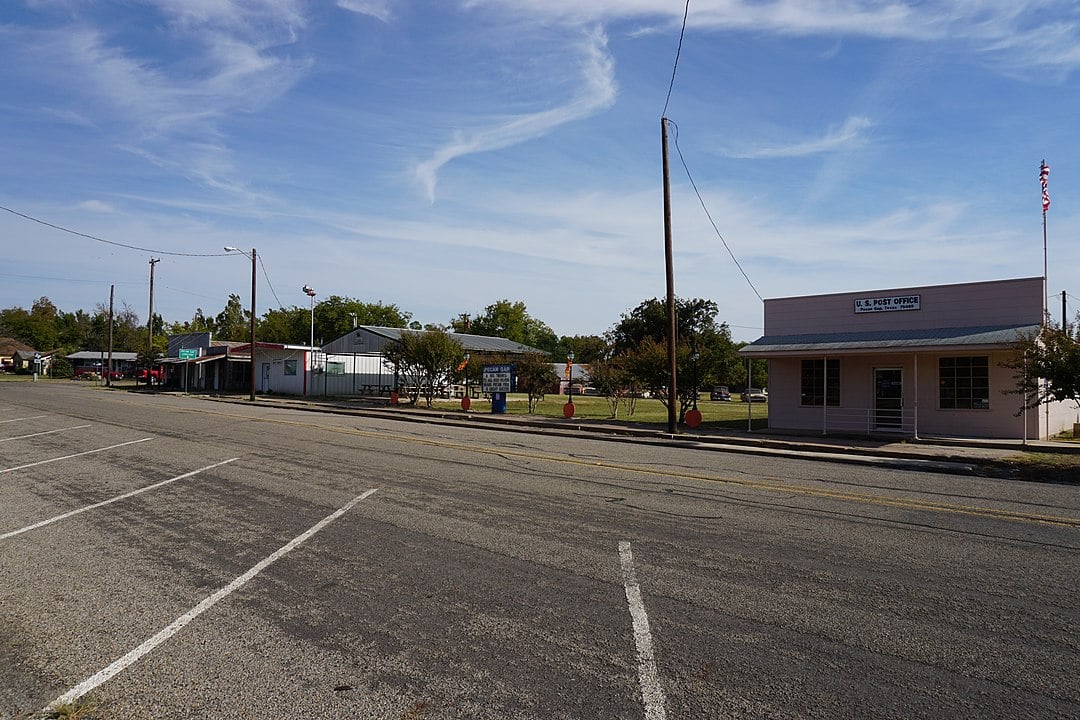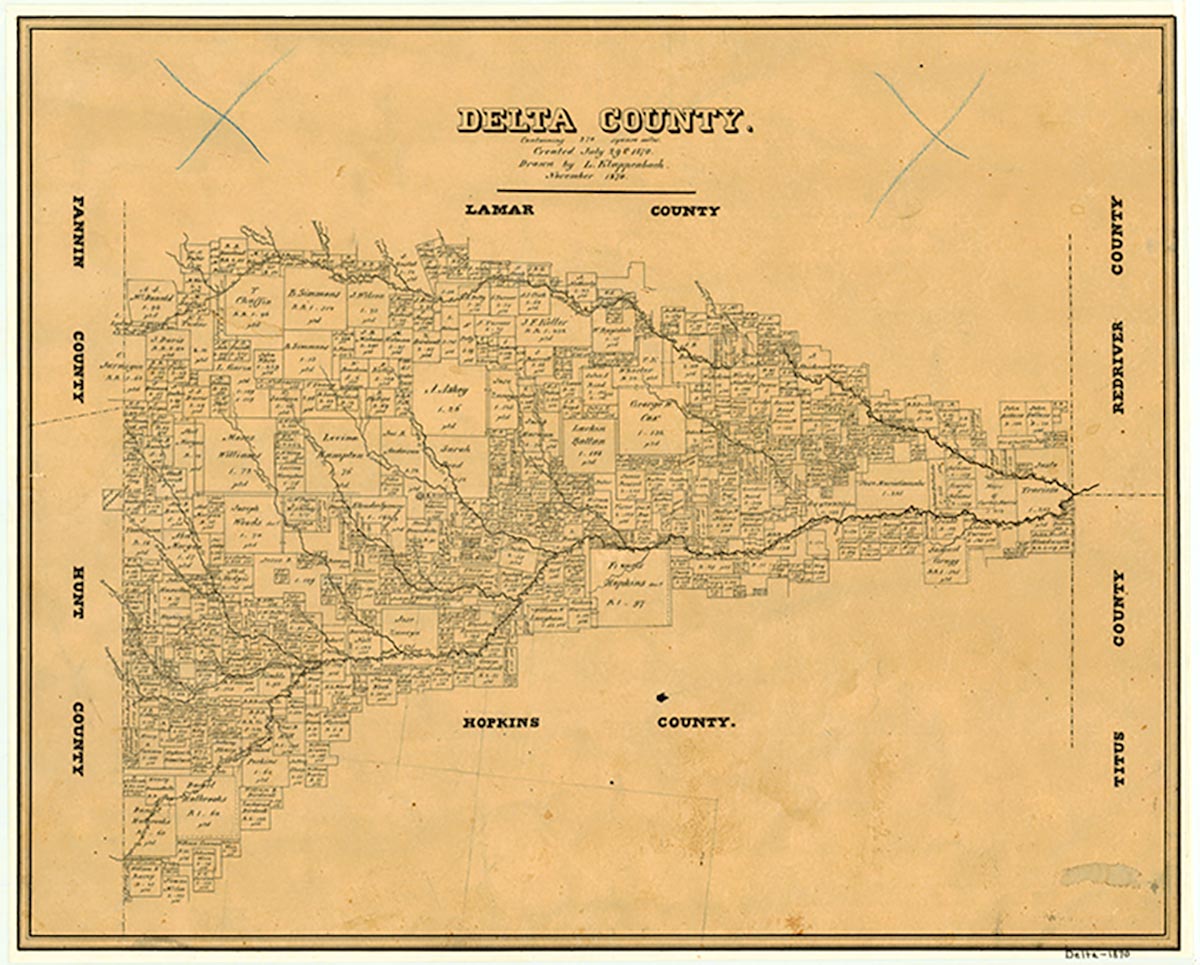Pecan Gap

Pecan Gap, Texas
Pecan Gap is at the junction of Farm roads 64 and 128, on the Atchison, Topeka and Santa Fe Railway in extreme northwestern Delta County. The area, originally part of the Curtis Jernigan survey, was settled as early as 1884, when the Pecan Gap Baptist Church, named for a nearby grove, was organized under the leadership of a Pastor Ridling. The following year John R. and Charlotte Clem arrived from Arkansas; other early settlers included Bill Pickard, a Mr. Holcomb, the Hardy and Norton families, and "Grandmother" Garner. In 1888 the Gulf, Colorado and Santa Fe Railway extended its tracks through the Clems' property and built the Pecan Gap depot. The town soon developed as a thriving cotton and trade center. George W. Merrill opened a post office, but John Clem, who had started a lumber mill and become the Baptist pastor, soon succeeded him as postmaster. That year he reported 500 residents in the community. Major businesses included the Birthright and Company gin, Carson Lumber Company, a drugstore, two groceries, two general stores, a hotel, a livery, and a saloon. Citizens also had access to the services of two doctors, a barber, two blacksmiths, and a telegraph office. Mrs. M. E. Miller taught music to local children, and Pecan Gap School, which offered both elementary and secondary classes, had been established by W. L. Mayo. The municipal government consisted of W. T. Edwards, justice of the peace, and W. P. Duvall, constable.
By 1890 mail arrived daily, and two new general stores and another grocery had opened. In 1892 postmaster G. D. Wood reported that he had become proprietor of a new general store. Other new businesses included Cockerell, Edwards and Company Drugs and Saloon and L. A. Campbell's saloon. Records for 1905 identified two schools, one for 134 White students and three teachers, the other for eighteen Black students and one teacher. By 1910 the population was 600 and the local lumber and cotton industries were successful. In 1929 the population was 500. Although the town had twenty-one businesses in 1933, the area had already been hard hit by the Great Depression, and many of the sawmills had closed. In 1936 Pecan Gap had 409 residents. In 1941 it still had twenty-one businesses. With the advent of World War II, many residents and businesses moved to more lucrative centers. In 1945 seventeen businesses remained, but by 1958 the number had declined to eleven. Maps for 1964 identified three businesses, two churches, and seventy dwellings; the population was 250. By 1970 the Fannindel Independent School District in Fannin County had absorbed the Pecan Gap system, and a community center had been completed. The town had 296 inhabitants and five businesses in 1989. In 1990 the population was 245. The population dropped to 214 in 2000.
Vista K. McCroskey | © TSHA

Adapted from the official Handbook of Texas, a state encyclopedia developed by Texas State Historical Association (TSHA). It is an authoritative source of trusted historical records.

- ✅ Adoption Status:
- This place is available for adoption! Available for adoption!
- Adopted by:
- Your name goes here
- Dedication Message:
- Your message goes here
Belongs to
Pecan Gap is part of or belongs to the following places:
Currently Exists
Yes
Place type
Pecan Gap is classified as a Town
Location
Latitude: 33.43821490Longitude: -95.85165100
Has Post Office
Yes
Is Incorporated
Yes
Population Count, 2021 View more »
181


